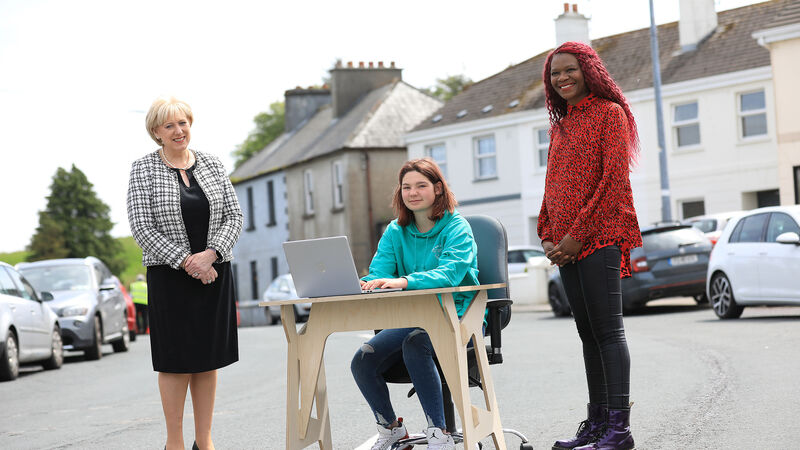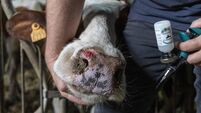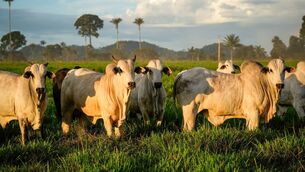How internet could transform rural Ireland

Minister for Rural and Community Development Heather Humphreys at the official opening of Swinford Digiwest Hub, Co Mayo, to launch the ConnectedHubs.ie platform which will allow the public to book a workspace country wide, for working remotely. Included are local Scoil Muire agus Padraig student Fionnghuala Benson, and hub client Cynthia Balouala. Picture: Julien Behal Photography
This week’s launch of the Connected Hubs Network, Ireland’s first national network of remote working hubs, gives a taste of how improving internet accessibility will transform rural Ireland.
What some people call the Fourth Industrial Revolution may yet transform the way people live and work in rural areas.
It will require internet connectivity and digital skills. But digital hubs can be the starting point.
Since 2015, nearly €73m has been invested in hub projects nationally.
Hubs can help rural areas get access to digital technology, develop digital skills, and improve business collaboration and growth, as rural life takes on the opportunities of life on the internet.
As digital skills build up, expanding internet communities can bring positive social and economic changes, unlocking a new wave of rural entrepreneurship and creativity.
Digital hubs can range from those which simply provide high-speed internet access, to those which support sector-specific businesses.
Space for meetings, networking and collaborating can give rise to start-ups, or provide local businesses and citizens with information and communications technology training, advice, and support.
Increased economic activity in rural towns will follow.
For example, the Ludgate Hub in Skibbereen ambitiously aims to create a sustainable economic ecosystem in the region, via digital entrepreneurship.
Since 2018, Clare County Council has set up digital hubs to utilise broadband and digital technology as key enablers of rural development, to support rural social enterprises and the wider community.
Their ambitious aim is to make Co Clare the remote working capital of Ireland.
The Dingle Hub aims to do much more than simply provide workspace, bidding to attract high skilled work to the peninsula, by fostering opportunities in collaborative projects to improve skills and develop entrepreneurship.
The pay-off includes encouraging young people to believe that they can live in their local community, with work that is rewarding and challenging.
Equally ambitious for digital hubs is Minister for Rural and Community Development Heather Humphreys.
Launching Ireland’s first national network of remote working hubs last Monday, she said: “Hub working can support the development of employment opportunities and career paths in rural areas.
“This will help to give young people the choice to stay closer to home while pursuing their careers and also to encourage people living in cities to consider moving to a more rural location.”
Undoubtedly one of the Government’s hardest workers, Heather Humphreys is the Minister of Justice in a temporary capacity during the maternity leave of Helen McEntee, as well as being responsible for Social Protection (the Government’s biggest spending department), and the Department of Community and Rural Development and the Islands.
The first woman ever elected for Fine Gael in the Cavan-Monaghan constituency, in 2011, she lives on a farm in Co Monaghan, and grew up on a farm (her brother, dairy farmer Bert Stewart, is a former chairman of IFA’s animal health committee).
She is therefore well placed to head up Our Rural Future, billed as the most ambitious policy for rural Ireland in decades, and remote working is a key commitment in this policy.
The Connected Hubs Network which she launched on Monday, is Ireland’s first national network of remote working hubs, designed to help workers and employers embrace a blended working model, to find the balance of hub, home and office working that works best for them.
Not sitting for hours in a car, if they can work near home instead, is an obvious attraction.
Ms Humphreys recently envisaged how people might travel the Wild Atlantic Way, while spending half the day working, if it suits, and the other half on leisure activities, by utilising hubs along the way.
“This is the game changer we all need for rural Ireland,” she said.
She says the increased shift to remote working in the Covid-19 pandemic brought the opportunity for a greater regional distribution of jobs and a better quality of life for many people who previously spent many hours in long commutes.
Already, 66 hubs across the country are on board in the Connected Hubs Network, the target is 400.
Members of the network can avail of shared supports to maximise benefits to member hubs, hub clients, employers, local communities and the wider economy.
A Connected Hubs Fund for hubs or broadband connection points will help them expand, install electric car charging points, upgrade disability access, and be compliant with social distancing guidelines.
The transition to remote work supported by the hubs network will be a significant driver of economic activity in rural and regional areas, and offers huge scope to improve the spread and impact of public services, said Tomás Ó’Síocháin, CEO of the Western Deveopment Commisison (WDC).
WDC research shows that people want to move closer to where they want to live, and hubs are part of the mix to help them improve their quality of life, and play a greater role in the community, while building careers.
The EU supports the remote working trend, and walks the walk along with talking the talk, with the European Commission planning to close half of its 50 office buildings across Brussels by 2030, as it aims to merge office space and allow home working, beyond the pandemic.
Of course, life on the internet in rural Ireland depends on internet “hot spots”, while internet “not spots” will be left behind.
The Government says it will take four years before 90% of premises in the State have access to high-speed broadband from the National Broadband Plan state-led intervention for 1.1m people living and working in over 546,000 premises, including almost 100,000 businesses and farms, along with 695 schools.
Citizens frustrated by years of delays will take even that long-distance schedule with a pinch of salt.
In the meantime, many will have to depend on broadband connection points and digital hubs, and connectivity for the more remote areas through initiatives like WiFi4EU, Microsoft’s Airband Television White Space Technology, and Starlink satellite broadband.
Some local communities are doing it for themselves, such as the B4OC voluntary group working to design and build a community-owned full-fibre-to-the-home broadband network for Piltown and Fiddown in south Kilkenny.
They can take inspiration from places like Newbury, a small Berkshire, England town, which has more than 15 times the average level of digital tech compared to the wider UK.
It provides evidence that smaller towns can become tech hotspots for post-pandemic activity, holding people who live nearby, who might otherwise become long-distance commuters.









